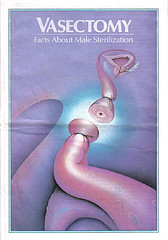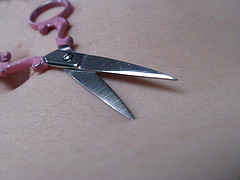Methods like tubal ligation and vasectomy are permanent contraceptive methods. They are distinct methods with completely different procedures and different recovery times. Tubal ligation is simply the removal or tying of the fallopian tubes. Vasectomy surgery, on the other hand, is about cutting the connection between the sperm-producing ducts and their exit. Men over 30 with 2, 3, or more children can undergo this procedure without any problem. Although simple, the surgery requires authorization from the couple, so if legally married, the man and his partner must both sign a contractual term provided by the urologist responsible for the surgery.
Vasectomy surgery is performed on a duct called the epididymis, which is located at the back of the testicles. This duct carries the sperm produced in the testicles to the vas deferens, which takes it to the urethra for expulsion through the penis during intercourse. The man continues to produce seminal fluid, but without the sperm contained in it prior to the vasectomy surgery.
What Is the Vasectomy Surgery Procedure Like?
The vasectomy surgery procedure is relatively simple, and is a minor outpatient procedure in almost all cases. Fasting, the man goes to the location to have the vasectomy and receives a local anesthetic, and in some cases light sedation similar to endoscopy or similar procedures. The incision is made in the scrotal sac, usually one on each side and roughly 1 cm in size. Through these openings, the doctor locates the epididymis and makes a cut, suturing both ends of the disconnected duct. In another step, the doctor cuts and separates the vas deferens as well. At this stage of the vasectomy procedure, the man may feel brief discomfort, but nothing major. This last step completes the vasectomy surgery process, and the man is then ready to go home.
Recovery is easier than the procedure itself. Sexual abstinence is recommended during the postoperative period, as well as ice packs to ease the pain from the incisions and anti-inflammatories to avoid recovery complications. There are reports of discomfort during the first weeks after vasectomy surgery, but recovery usually is very fast, and within 1 or 2 days, normal activities can be resumed. Some men return to work the day after the procedure.
Myths and Facts About Vasectomy Surgery
Some fears still surround many men when it comes to vasectomy surgery, but most of the factors that might prevent this simpler form of sterilization from being chosen are myths or mere excuses due to the patient’s fear.
Will vasectomy surgery make it difficult for me to get an erection?
No, we can say that vasectomy is 100% safe regarding impotence. Vasectomy surgery is performed by specialists who are trained and qualified for this procedure. Also, the cut ducts have nothing to do with the blood vessels that cause an erection.
Is it still possible to be fertile after vasectomy surgery?
Yes, in rare cases, the ducts can regenerate or naturally reconnect, or sperm leakage can occur. A more common issue is that the couple has unprotected sex soon after the surgery, but the time needed to achieve complete absence of sperm is typically 90 days post-procedure. Some sperm may remain in the upper vas deferens and could cause pregnancy. Sixty days after vasectomy surgery, the man should have a sperm analysis (spermogram) to check the success of the surgery.
Can men with testicular problems have a vasectomy?
Yes, but the doctor must evaluate each case to recommend or discourage the procedure, so talk to a urologist before making a decision. Issues such as varicocele, for example, may allow vasectomy without problems.
Scenes from a vasectomy surgery – it is relatively calm to watch, but if you are easily startled, refrain from pressing play.
Can a vasectomy be reversed?
Yes, but it is not 100% guaranteed. There are cases in which even vasectomy reversal surgery may not work due to problems affecting the male organ where sperm is produced. Examples include the production of anti-sperm antibodies. Another issue is the difficulty in reconnecting the ducts, so if you regret your vasectomy, it’s best to consult with a good specialist. Some cases are more delicate: when reversal is not possible, in vitro fertilization should be considered. For this, procedures exist to extract sperm directly from the source, making it possible for the couple to have a baby.
Couples who no longer wish to have children should consider vasectomy, as it is much simpler than tubal ligation surgery. While vasectomy is relatively easy to perform, tubal ligation is much more invasive. Both vasectomy and tubal ligation are methods that can be reversed, but since they are invasive procedures, the decision should be made by the couple and carefully considered due to the risk of regret. Sitting down and talking to decide if this is the right choice is very important to avoid future regret.
See also: Tubal Ligation and Tubal Ligation Reversal – Is It Possible?
Photo: kristykay22, Night-thing













